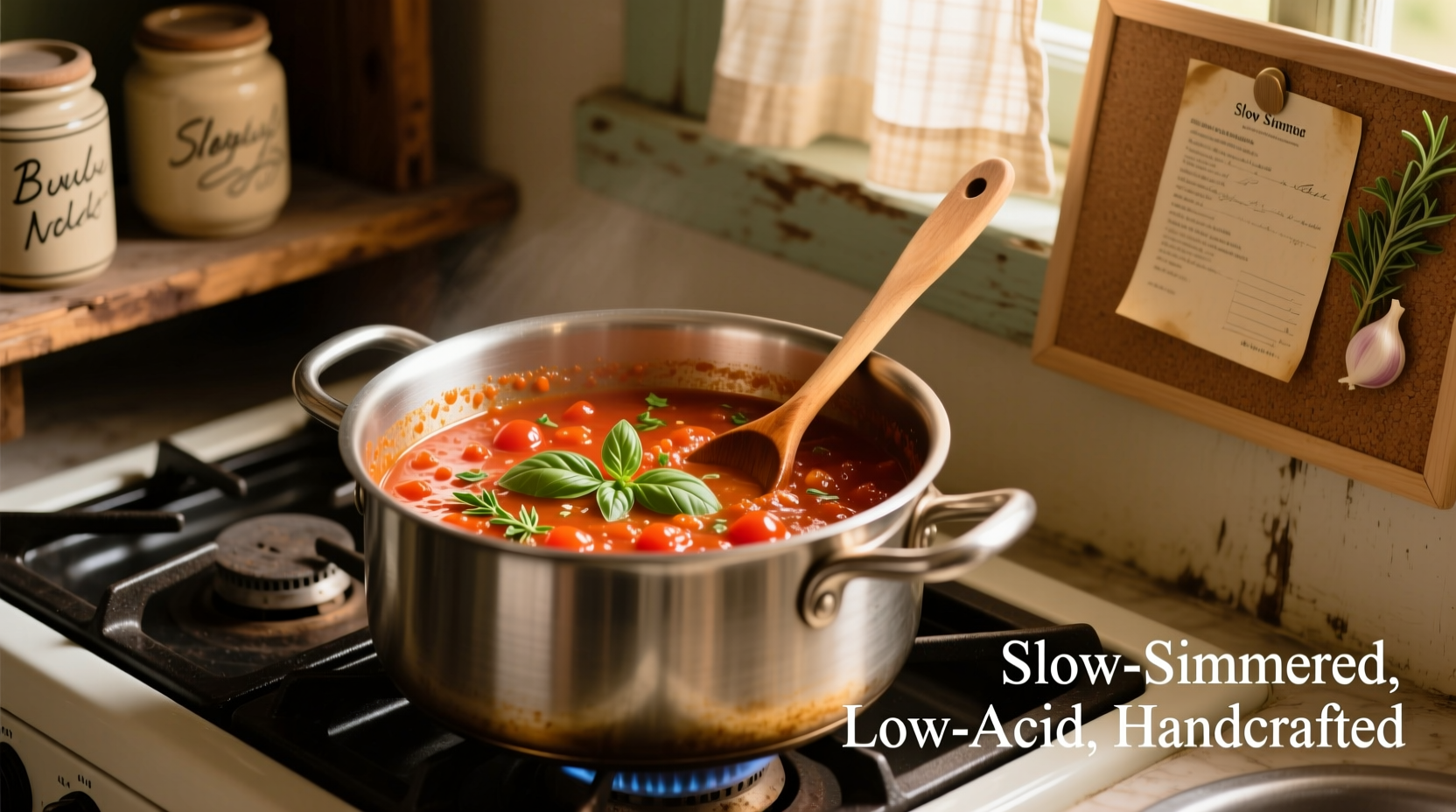Discover how low acid tomato sauce can transform your cooking experience while supporting digestive health. Whether you're managing acid reflux or simply prefer a smoother tomato flavor, this guide delivers science-backed solutions you can trust.
Why Tomato Acidity Matters for Your Health
Tomatoes naturally contain citric and malic acids, giving standard tomato products a pH of 4.0-4.5. For most people, this acidity poses no issues. However, individuals with gastroesophageal reflux disease (GERD) or sensitive stomachs often experience discomfort from these acidic levels. The American College of Gastroenterology identifies tomatoes as a common dietary trigger for acid reflux symptoms, affecting approximately 20% of the U.S. population.
Low acid tomato sauce addresses this concern by raising the pH to 5.0-6.0 through specific processing techniques. This seemingly small pH difference significantly reduces gastric irritation while maintaining the essential tomato flavor profile. Unlike misleading "mild" or "gentle" claims, true low acid products undergo verified pH testing to ensure consistent results.
| Product Type | Average pH Level | Acid Content (g/100g) | Best For |
|---|---|---|---|
| Standard Tomato Sauce | 4.0-4.5 | 0.5-0.7 | General cooking, canning |
| Low Acid Tomato Sauce | 5.0-6.0 | 0.2-0.3 | Acid-sensitive individuals |
| Tomato Passata | 4.3-4.8 | 0.4-0.6 | Delicate sauces, children |
How Low Acid Tomato Sauce Is Made: Science Behind the Process
Creating genuinely low acid tomato sauce requires more than just adding sugar. Reputable manufacturers use one or more of these verified methods:
- Natural ripening control - Harvesting tomatoes at peak ripeness when acid levels naturally decrease
- pH adjustment - Carefully adding calcium carbonate or baking soda in precise amounts
- Specialized processing - Using steam peeling instead of acid-based peeling methods
- Ingredient selection - Choosing naturally lower-acid tomato varieties like San Marzano or Yellow Pear
The FDA requires commercial tomato products to maintain specific pH levels for safe canning. True low acid tomato sauces undergo third-party pH verification to ensure consistency between batches. This quality control matters because inconsistent acidity can compromise both flavor and safety.
Identifying Authentic Low Acid Products
Not all "mild" tomato sauces deliver genuine low acidity. Look for these verification markers when shopping:
- Explicit pH level statement on packaging (5.0 or higher)
- Certification from digestive health organizations
- Manufacturer's explanation of their acid-reduction process
- Ingredients listing showing pH-adjusting agents like calcium carbonate
Avoid products that simply claim "less acidic" without verification. The USDA's pH testing guidelines for tomato products confirm that without proper measurement, "low acid" claims may be misleading. Reputable brands like Pomi and Muir Glen offer verified low acid options with transparent labeling.

Creating Your Own Low Acid Tomato Sauce at Home
For complete control over ingredients and acidity, homemade low acid tomato sauce offers significant advantages. Follow this professional chef-tested method:
- Select naturally sweeter tomato varieties like Golden Jubilee or Big Rainbow
- Peel using steam or hot water method (avoid acid-based peeling)
- Add 1/4 teaspoon calcium carbonate per quart of tomatoes during cooking
- Incorporate alkaline ingredients like roasted red peppers or carrots
- Simmer gently for 25-30 minutes (extended cooking increases acidity)
- Test final pH using food-safe strips (aim for 5.0-5.5)
Important safety note: Never attempt home canning with low acid tomato sauce unless you use a pressure canner. The National Center for Home Food Preservation warns that improperly canned low-acid foods risk botulism contamination. For shelf-stable storage, freezing remains the safest option for homemade low acid sauces.
When Low Acid Tomato Sauce Isn't the Solution
While beneficial for many, low acid tomato sauce isn't universally appropriate. Consider these context boundaries:
- Canning requirements - Standard acidity is necessary for water-bath canning safety
- Flavor balance - Some recipes require acidity for proper flavor development
- Nutritional considerations - Lycopene absorption decreases with higher pH levels
- Medical conditions - Not all digestive issues respond to reduced acidity
Consult with a registered dietitian if you have specific health concerns. The Academy of Nutrition and Dietetics recommends personalized dietary approaches rather than blanket restrictions for most digestive conditions.
Debunking Common Misconceptions
Several myths persist about low acid tomato products that deserve clarification:
- Myth: Adding sugar makes tomato sauce low acid
Truth: Sugar masks but doesn't reduce actual acidity levels - Myth: All "light" or "mild" sauces are low acid
Truth: These terms refer to flavor intensity, not pH levels - Myth: Cooking tomatoes longer reduces acidity
Truth: Extended cooking actually increases acidity through concentration - Myth: Low acid means no tomato flavor
Truth: Properly made low acid sauce maintains rich tomato character
Practical Integration Into Your Cooking
Low acid tomato sauce works beautifully in these applications:
- Morning shakshuka for acid-sensitive breakfast lovers
- Base for creamy tomato bisque without curdling dairy
- Infant and toddler food preparation
- Delicate seafood sauces requiring milder acidity
- Dietary protocols for post-esophageal surgery patients
Professional chefs often blend low acid and standard tomato products to achieve perfect flavor balance while accommodating dietary needs. This technique allows restaurants to serve inclusive menus without compromising culinary excellence.











 浙公网安备
33010002000092号
浙公网安备
33010002000092号 浙B2-20120091-4
浙B2-20120091-4